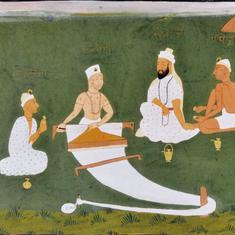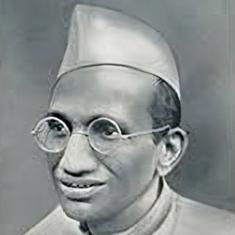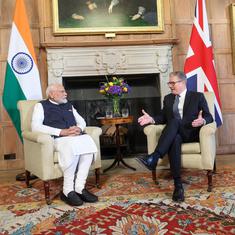“Summoning Earth”, one of the five elements of nature as a witness, Tansy Troy’s poems arrive in With Earth as My Witness as though they are incantations ringing through the supreme silence of the universe. They are chroniclers of time and guardian angels of “karmic ends, completing narratives” before the great extinction.
In the offerings to “petals, bone, stone and leaf”, time stands still as the Bodhi tree speaks in a voice ripened by wind and rain, its leaves remembering and “replicating the beauteous form of Siddhartha”. The hibiscus seeks him out as he wanders through the village, offering her scarlet-crimson speech. Prayers rise as a dragon’s rumble under the Bodhi Tree. In the land where these poems belong, one is released from the mortal anxieties and insecurities, and one turns deeper into the symbiotic relationship between nature and human being. The raven with her “blue knowing” and “darkling intuition” disappears through the earth’s secret doors, showing us the way.
Returning to previous lifetimes
There is a greater degree of peace and contentment in relinquishing the burdens imposed by material pursuits. Elated to be at last released from “the weight of turquoise crowns” and “heaviness of clod,” the last Queen of Testa Kha returns to “the wilderness of rock” and “ceaseless torrents.” She will not trot back along the road the way back home anymore, and she is “no longer the gatekeeper of an unacknowledged realm”. There is a deep flavour of Orientalism in these poems. As Edward Said observes, the Orient is not only adjacent to Europe; it is also the source of its civilisations and languages, its cultural contestant, and one of its deepest and most recurring images of the Other. In addition, the Orient has helped to define Europe (or the West) as its contrasting image, idea, personality and experience. Yet none of this Orient is merely imaginative. The Orient is an integral part of European material civilisation and culture. Orientalism expresses and represents that part culturally and even ideologically as a mode of discourse with supporting institutions, vocabulary, scholarship, imagery and doctrines.
These poems are also about lived experiences where questions waylay the poet and she returns to previous lifetimes for answers. In the poem “Pass Over Shinku La”, “Abe le tosses red barley, chanting/Fire in the snow as she lights the pyre/of incense to her gods./Each stone on the path appears/ to have a sacred syllable inscribed.”
The poet pauses to ask whether it is altitude or do these rare, remote people really walk on prayer. How does literature restore or demolish the narratives of religion and God is a question we have contemplated from time to time in various memories of lost habitat and lost heritage, be it the Ramayana, Mahabharata, Odyssey or Ragnarök. We have also seen through the textual narratives of history how, moved by violence and anguish, human beings have relinquished power and self, be it Ashoka after the Kalinga war or Siddhartha who abandoned his kingdom and earthly comforts to be a wandering mendicant. Meeting God in Nako is a fine poem in satire which turns back the clock where one encounters young monks play-fighting at the prayer ground, plastic revolvers at the ready and as the spiritual orphans wander up on forgotten paths, God appears in a car, black as some great cat.
Symbols and symbolism
The poems are also about empathy for creatures that co-exist with us in this life, as momentary as a shooting star. In the third part of the poem “I saw Three Snakes”, we read: “After speaking of the Buddha/on a verandah in rainy foothills/this third snake mesmerizes/myopically, I watch it undulate/fast as tiny gold rivulet/ smooth as swiftest mud/ In the name of the Father, a stick is raised/ Lord of life once more compelled/ to squirm indignant/ force itself/ into another dark hole/ Again, I curse those fearful voices/ who halt the Naga’s dance.”
This poem delves deep beneath its surface to examine a range of profound questions, intricately woven with religious symbolism and the contrasting meanings these symbols evoke. It invites us to reflect on the diverse perspectives that religions present. For instance, in the Biblical tradition, the snake is often viewed as a catalyst playing a pivotal role in Adam and Eve’s fall from Eden whereas in Hinduism, the snake is revered as a symbol of divine power, embodied by Anantha Nag, the serpent god who is believed to uphold the balance of the Earth and represent the very essence of life. In Buddhist tradition, it is believed that after Buddha started meditating under the Bodhi tree, the heavens darkened and a heavy rain fell, whereupon the mighty king of snakes emerged from beneath the earth and protected Buddha with his hood.
There is greater immortality in decomposition when the poet says: “I relish the idea of being/ deconstructed by earthworms/ broken down to micronutrients/ready to re-embody as something/ wholesome, organic, serene/ reassuring to imagine/ being rocked asleep in wicker/ a seed in new sprout/ and what of the thoughts/dreams/connections/ words/visions/will these decompose as well/or are they immortalized/ by the simple act/of another/holding me/reading me/ absorbing me/ absorbing me into their world.”
The idea of being absorbed into someone else’s world, of being read, held, and remembered, presents a kind of immortality that exists in the shared experience between the writer and the reader. Through these multifaceted layers, the poems reveal a deep meditation on the interconnectedness of life, death, culture, religion, and memory, as the poet weaves together personal reflection with larger philosophical and spiritual questions. The timeless dance between creation and destruction, sacred and profane, the human and the divine, all find their place in Troy’s powerful, tender and rich tapestry of words, even as they assertively set out a new Universal Declaration of Human Rights in a true spirit of harmony, mutual respect and peaceful co-existence with Earth as her witness.

With Earth as My Witness, Tansy Troy, Red River Press.










